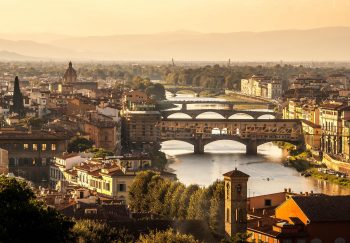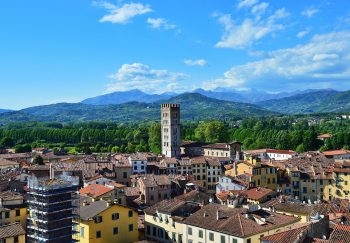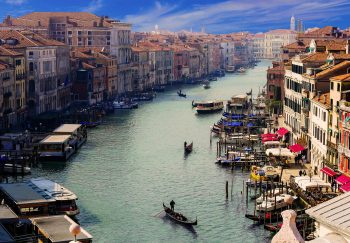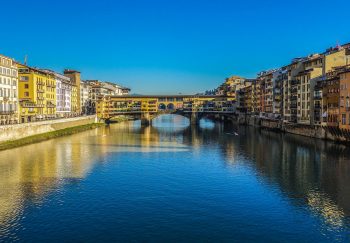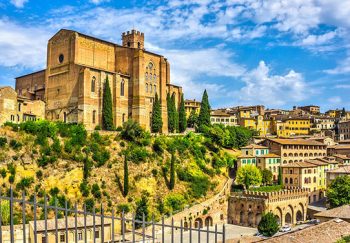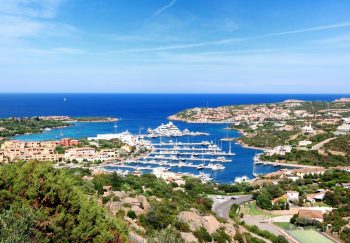The pervasiveness and influence of Italian culture all over the globe has its benefits. Even if we have anglicized or changed the pronunciation, most of us know food terms like “ragu” or “spaghetti”. “Ciao”, a greeting that transcends language, is used around the globe – .
Our familiarity with Starbucks-style coffee shops puts us at disadvantage when it comes time to learn about Italian coffee culture. It’s similar to the differences between American English or British English. While it is easy to assume you understand what someone across the pond means, the connotations and meanings of words can be quite different on the opposite side of the ocean.
It’s possible to sound familiar with the Italian coffee language, but it is important that you have some background information before you assume that you know what it means.
Let’s start you on the path to Italian Coffee Fluency.
Where to Get Coffee In Italy
Italian’s word for coffee is “caffe” which looks like “cafe,” but it’s not what Italians refer to as coffee shops. Italians love to go to bars for their morning coffee.
The bar may offer coffee, pastries, sandwiches, coffee, and desserts in the morning. It closes by mid-afternoon. Sometimes, the bar will switch to cocktails or pretzels for aperitivo.
It doesn’t matter what .
Italy’s Morning Coffee Ritual
Speaking of coffee, you will see most Italians in the mornings when they stop by their local bar to grab a quick cup of coffee and a cornetto before heading to work. That’s breakfast, Italian-style.
It is common for Italian bars to be crowded during rush hour. To get service, you might need to push your way to a counter. Each bar has a different policy regarding payment. You might pay a cashier first, then take your receipt to the counter so that the barista can know what you ordered. Or you may pay the cashier directly after you finish.
It’s nice to leave a small coin, perhaps 10 or 20 cents, on the counter for the barista. Find out more about tipping for Italy.
Do not be afraid to sit down
If you are used to drinking coffee in 20-ounce paper cups, a typical Italian coffee will consist of one shot of espresso. It’s quick to drink and most Italians simply go to the bar to get their coffee.
Another reason is: The other reason is that many bars will charge you more for what you order if your table is set up. If you are on a tight budget, keep this in mind.
Espresso vs. Drip Coffee
Although espresso may taste stronger for some, the caffeine content of a coffee drink is directly related to how long the water has been in the grounds. French press coffee is much more caffeine-rich than espresso.
You should take this into consideration, along with the fact that most Italian coffees are small in size, and go to a bar once a day to get a quick boost to keep you going.
The 11am Cappuccino Rule
Your neighbor heard about her cousin from her best friend. You shouldn’t have cappuccino after 11am in Italy. When she learns that you are going on an Italy trip, she will pass that information along to you. This is a common tactic used by well-meaning people to pass on information that appears to be insider knowledge, but in reality it’s gossip, rumor or, worse, misleading.
I would put the entire 11am cappuccino rule into the latter category.
I wrote an entire article on why . It also includes the history of the drink’s name.
This abbreviated version will suffice to say that the belief that milk causes indigestion prevents Italians from drinking milk-based beverages following meals. Although you might get some strange looks from the waiters if you order a cappuccino as a dessert after dinner, most people will get what they ordered.
You Must Know Coffee Vocabulary
A caffe could be ordered every time you visit an Italian bar on your vacation to enjoy a delicious Italian coffee experience. You’ll also need to learn more about coffee if you wish to broaden your knowledge.
- mehr
- FEH) – This word means “coffee” in Italy, and is the term for a straight shot of espresso. If you don’t want “un espresso”, you would order “un caffe” at the bar.
- poo Find out more about .
- REH This is a popular after-dinner drink that’s usually accompanied by something sweet, such as Baileys or Sambuca, but Grappa can also be used.
- eh It is usually found in small packets along with the sugar on top. It is a brand name. The capital D stands for “brand”.
- yoh) – The word means “double,” so if you want a stronger drink (albeit still small) ask for “un caffe doppio.”
- PRESS The word caffe is the one you see above.
- doh) – The word means “cold,” so keep this term handy for a caffeinated summer drink. This is not an iced espresso, but it is a shot of espresso that has been chilled from sitting at room temperature for a few minutes or in the refrigerator.
- NEE Although it’s not as good as a SnoCone or Slurpee, these ideas should get you started. There are many flavors available, and most often they’re mixed with fruits. But there’s also a coffee granita, or “unagranita di cappuccino” – which will blow your socks off. The one at Tazza d’Oro in Rome is famous.
- Hag – This brand of decaffeinated espresso has become the standard term for decaf everywhere. If you don’t get anywhere with “un Hag”, the Italian term for decaffeinated coffee is “deca”.
- teh) – In Italian, this word means milk, nothing more. Contrary to what Starbucks has taught you, ordering a Italian latte won’t get your a cup of coffee. It’s called “un caffe con lata” in Italy, but that’s only a small version. If you ask for “un caffe lata”, you will get tall glasses of steamed milk and a small amount of espresso.
- goh) – The word means “long,” and refers to the amount of time taken to pull a shot of espresso. In this instance, a long shot means that the coffee is slightly larger than an ordinary Italian caffe. Although it isn’t as large as an americano, the coffee has been pushed through the espresso beans and not added water to each shot.
- KYAH It is usually just a small amount of milk, mostly coffee. However, it can help to reduce bitterness if you don’t like strong coffee.
- roh Although I don’t know where the name came from, it seems to me that it is not very good. This drink is sometimes called “espressino” in some parts of Italy. It consists of a shot espresso, a layer milk foam and a pinch of cacao powder. It is often served in glasses with metal handles and glass cups. This is, in fact, my favorite Italian coffee drink.
- nah) – The word means “cream,” which you may remember if you read my article on ordering gelato, since you might be asked if you want your gelato con panna. A little whipped cream might be a nice addition to your Italian coffee.
- STREH
- keh This is a mixture of espresso, sugar and milk. It’s shaken in a cocktail shaker until it becomes cold. It is poured into a glass but not with the ice.
- keh Italians love sugar in their coffee.
Order Non-Coffee drinks
- feh DOR Any of the above-mentioned coffee drinks can be made with caffed’orzo if the bar contains it. Although I haven’t tried it, friends say it tastes nothing like coffee. It’s not bad but it’s not coffee.
- koh It can be thick, pudding-like or a rich, chocolatey liquid. It’s a great cold-weather treat. Find out more about Italian hot coco.
- Te (teh), – This is the definition of “tea.”
For more information, check out Sara, my friend’s ebook How To Order Italian Coffee in Italy.
